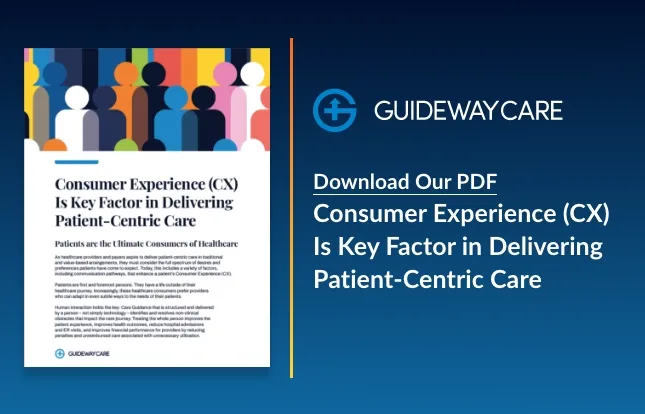AMGA’s Group Practice Journal Features Ideal Role of Care Guidance: Supporting “Triple Aim” of Payviders in Value-Based Care

Key Points:
- Payvider arrangements are one of the best next steps in advancing healthcare access, quality and financial performance
- The success of payviders results from moving to a collaborative approach that incorporates the ‘triple aim’ goals of lower cost, higher quality and better service
- The key to unlocking “value” in value-based care is better interaction with patients
- Care guidance serves as a perfect extension of quality payment programs (QPP)
Click here to access our latest article on how Guideway Care supports the role of payviders in value-based care arrangements, now published in the Group Practice Journal
As the flagship publication of the American Medical Group Association® (AMGA), this editorial offers dynamic business solutions to physician leaders and administrators at medical groups around the world. AMGA represents the nation’s most prestigious integrated systems of care and advances high performance healthcare through its 175,000-physician members and partner organizations.
Today’s payviders seek to minimize financial risk, increase profit margins and provide measurable quality care that enables them to retain health plan members. The experience of payviders in the 1990s who largely failed due to high-financial risk, non-competitive prices and soaring utilization costs has spawned a new breed of payviders that are demonstrating significant successes.
As our healthcare systems continue to face unprecedented economic challenges, the payvider model is showing advantages and opportunities to advance both health equity and financial performance. This growing payvider space is indicative of the future-ready position of many organizations in our current healthcare system.
According to Craig Parker, CEO of Guideway Care, “Increasing investments are being made into payvider arrangements that offer coverage centered on risk, and this creates an opportunity for payviders to get aggressive about value-based care. The success of payviders hinge on moving to a collaborative approach to reach the ‘triple aim’ goals of lower cost, better patient experience and improved health outcomes tied to health equity.”
Care Guidance Supports Payviders in Value-based Care Arrangements
While traditional fee-for-service reimbursement models tend to increase the quantity of healthcare services provided, new reimbursement programs have emerged that are changing the way healthcare services are being delivered by rewarding providers for the quality of care they render based upon standardized VBC metrics. This is relevant to supporting the same challenges of at-risk patient populations who experience health inequities attributed to social determinants of health (SDoH) and other disparities.
The key to unlocking the “value” from these value-based incentives is to find better ways to interact with patients – especially outside the clinic walls and in areas of need that may not directly relate to healthcare. Finding and solving SDoH has proven essential to qualifying for many of these value incentives, and well-designed programs that go beyond clinical navigation produce greater savings.
Guideway’s care guidance program is a perfect extension of Quality Payment Program models. Working in the space between the “outside life of a patient” and the care journey inside the clinic walls, Guideway’s highly trained “care guides” operate within a scalable, technology-enabled platform to activate patients and their families and uncover and resolve practical, non-clinical issues and barriers experienced during their care journey. Following structured, AI-assisted workflow protocols ensures that potentially relevant clinical information is also escalated to proper clinical care or social service teams and proactive interventions are promptly initiated by the care guides to resolve non-clinical barriers to care.
Care guidance, a form on patient activation beyond mere engagement, has been validated by CMS to reduce unnecessary ER visits, hospitalizations, and readmissions. As a result, organizations can reduce the total cost of care, as well as influence significant improvements in patient appointment attendance, health outcomes, patient experience (CX) and reported satisfaction and quality metrics in VBC arrangements.
Guiding the Future of Equitable Healthcare
Contact us for insight into how Guideway Care, as your partner, can implement an efficient and effective care guide solution to support your clinical team and deliver on the promise of health equity based on the needs of the patient populations in your community.
Contact Us Today To Learn How We Can Help
"*" indicates required fields




